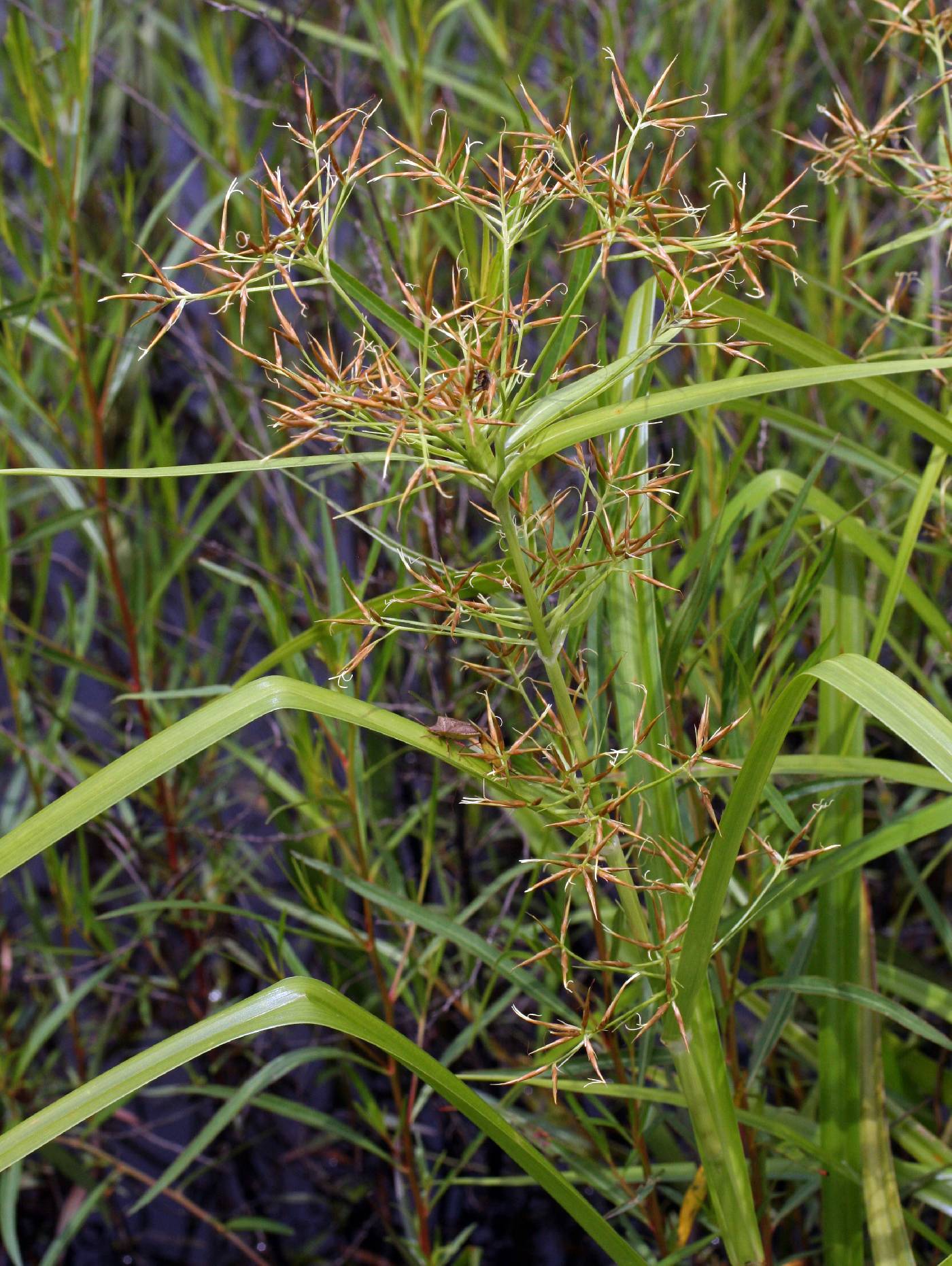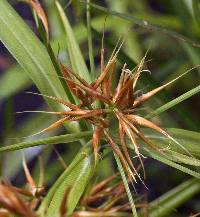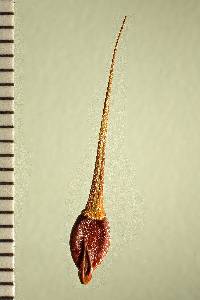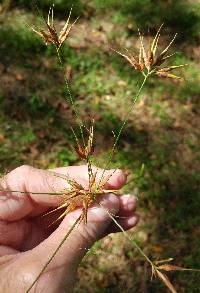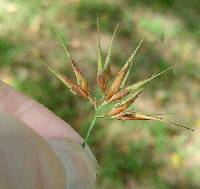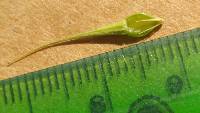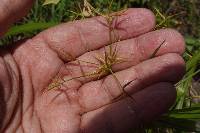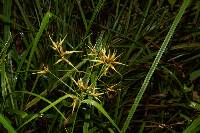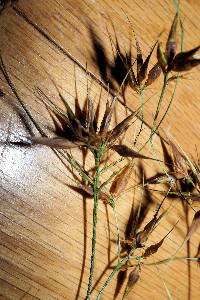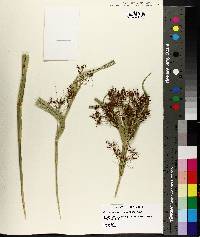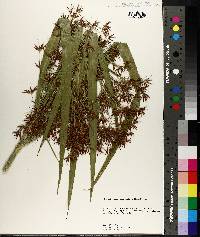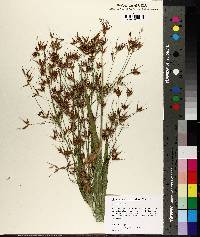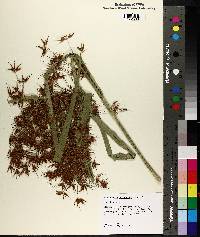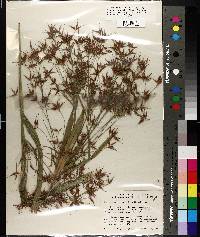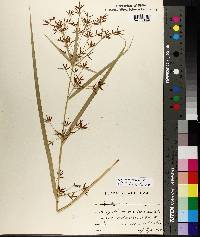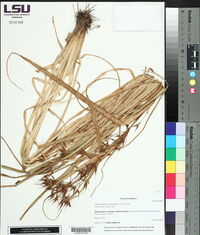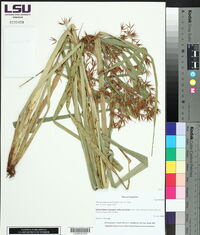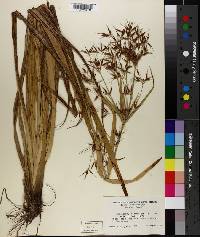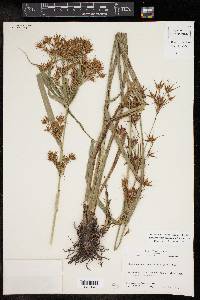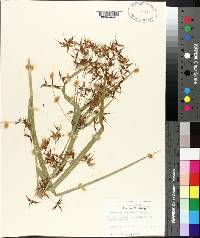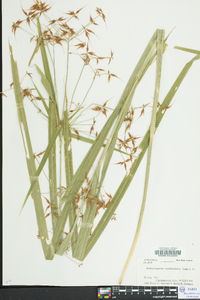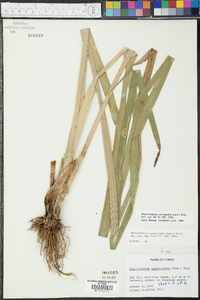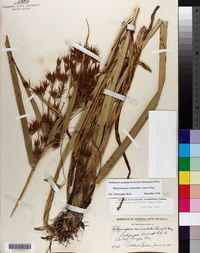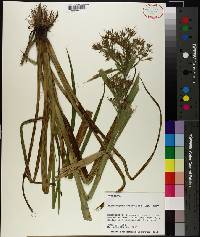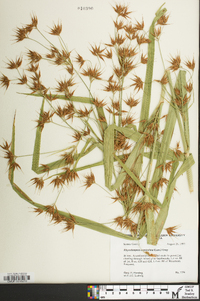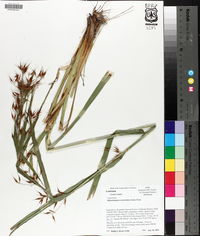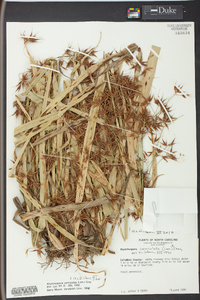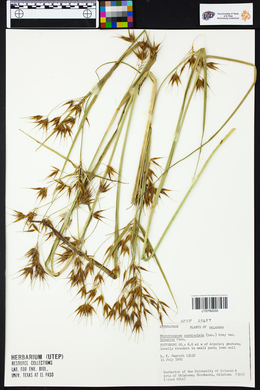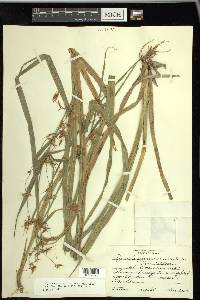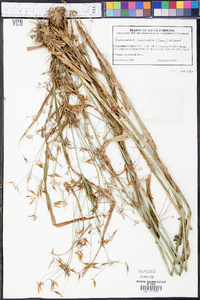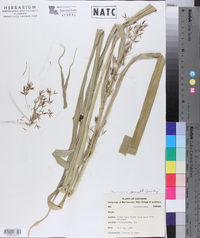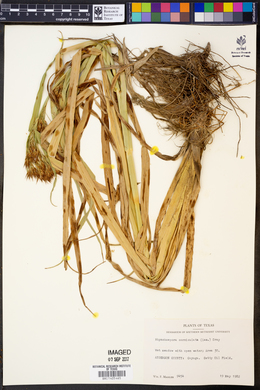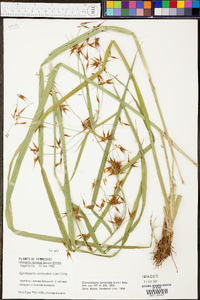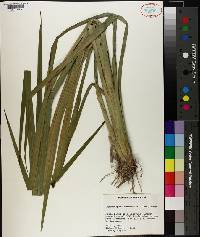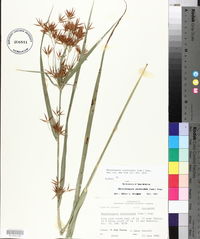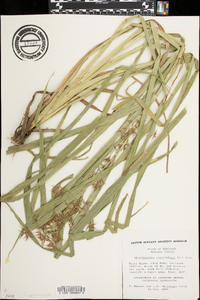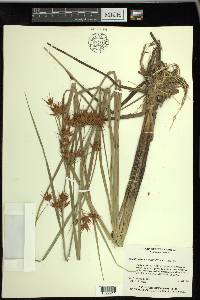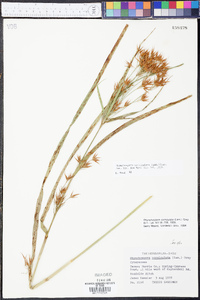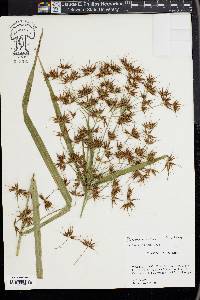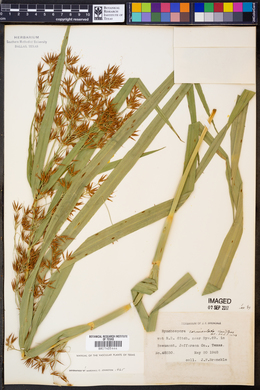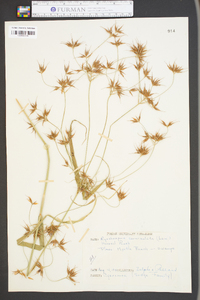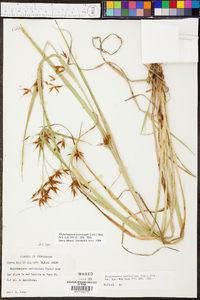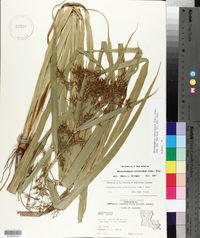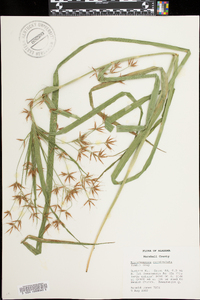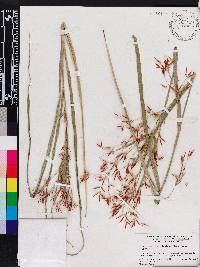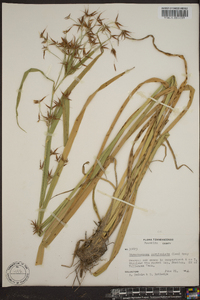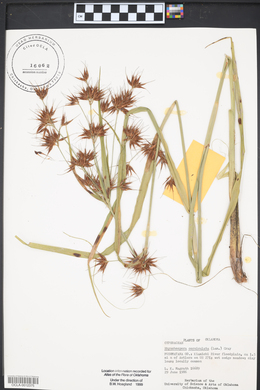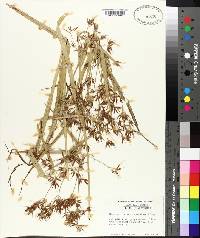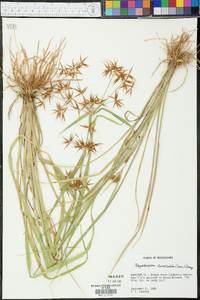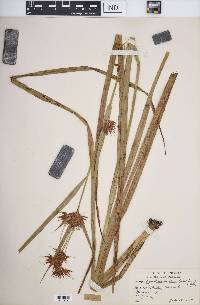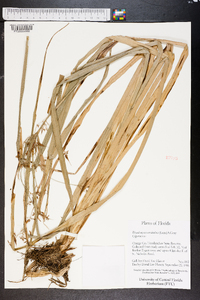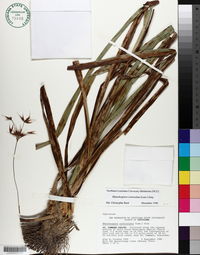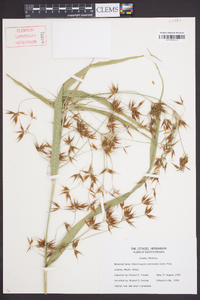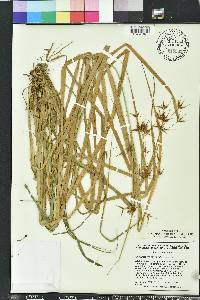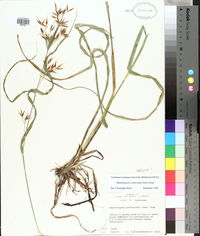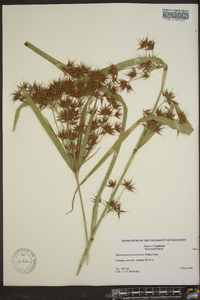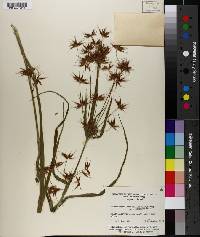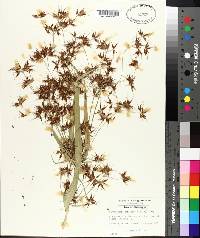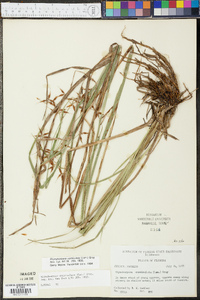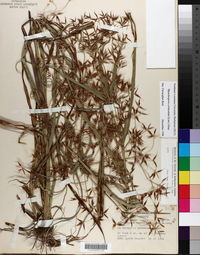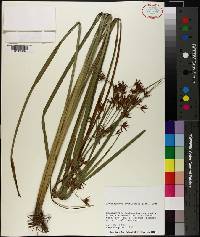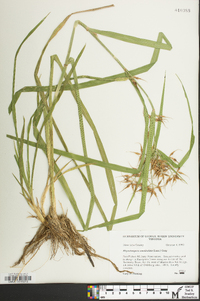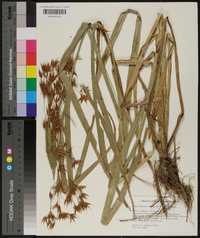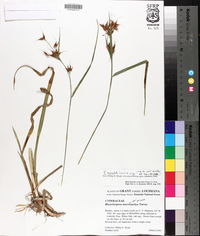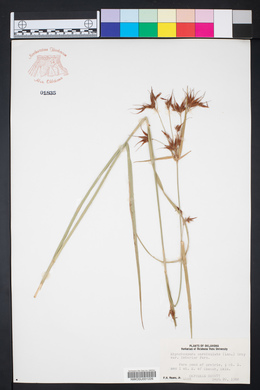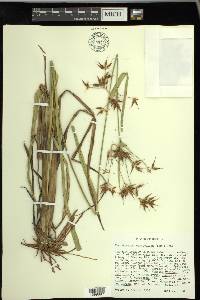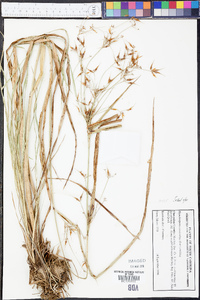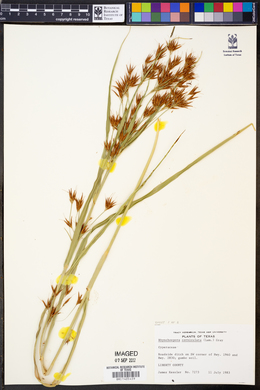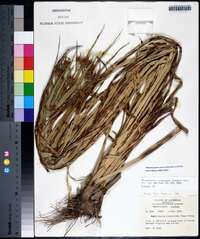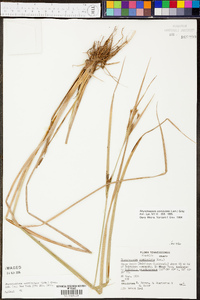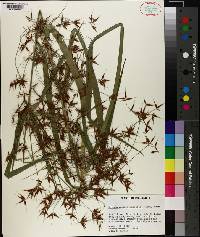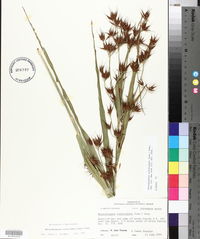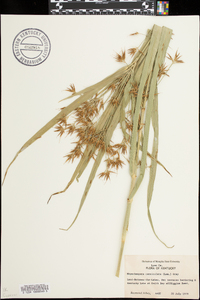Rhynchospora corniculata
|
|
|
|
Family: Cyperaceae
Short-Bristle Horned Beak Sedge, more...shortbristle horned beaksedge
[Ceratoschoenus corniculatus (Lam.) Nees] |
Plants perennial, cespitose, 100-150(-200) cm, coarse; rhizomes absent. Culms stiffly erect, leafy, triangular, multiribbed; principal leaves overtopped by culm; blades flat, 3-20 mm wide, apex attenuate, trigonous. Inflorescences terminal and axillary, diffuse clusters of corymbs, fascicles turbinate to hemispheric; bracts often overtopping clusters. Spikelets few to several per cluster, brown or reddish brown, lanceoloid, 10-15 mm, apex narrowly acute; fertile scales broadly lanceolate, (7.5-)10-13(-14) mm, apex acute, midrib short excurrent or not. Flowers: perianth bristles 5-6, longest reaching to or slightly beyond fruit midbody, antrorsely barbellate. Fruits 1(-2) per spikelet, 13-20(-25) mm; body oblong ellipsoid, compressed, 4-5(-6) × 2-3 mm, base narrowed, short, margins thickened, often crimped, surfaces concave, striate, minutely cancellate or pebbled; tubercle subulate, 2-grooved, 10-15(-20) mm, scabridulous. 2n = 18. Fruiting summer-fall. Swamps, marshes, and shallows, mostly in basic to circumneutral, silty or muddy open sites; 0-400 m; Ala., Ark., Del., Fla., Ga., Ill., Ind., Ky., La., Md., Miss., Mo., N.C., Okla., S.C., Tenn., Tex., Va. Specimens of Rhyncospora corniculata with base of the tubercle fully as wide as the fruit and with fruit bodies at the lower length range were treated by M. L. Fernald as R. corniculata var. interior Fernald. The percent of fruit with crimped margins in Rhynchospora corniculata increases westward in the Gulf coastal plain; toward Mexico it is sympatric with R. indianolensis and R. gigantea, which also have crimped fruit.
Perennial herb, tufted 1 - 2 m tall Leaves: alternate, three-ranked, 3 mm - 2 cm wide, flat, linear with a tapering tip, parallel-veined, with a sheathing base that encloses the stem. Sheaths opening at the top. Inflorescence: a widely branched head of spikelet clusters, terminal and axillary, to 20 cm wide, subtended by leaf-like bracts. Bracts often overtopping the spikelet clusters. Spikelet clusters reverse cone-shaped to hemispheric. Flowers: minute, subtended by a floral scale, lacking sepals and petals, bearing five to six bristles. Bristles shorter than the achene. Stamens exserted. Pistil one. Style two-cleft. Fruit: a one-seeded achene, one or two per spikelet, brown, 4 - 5.5 mm long (not including tubercle), 2 - 3 mm wide, reverse egg-shaped with a narrowed base, flat, margins thick, surfaces concave, finely lined. Tubercle 1 - 1.5 cm long, awl-shaped, two-grooved, minutely rough. Culm: upright, stiff, 1 - 2 m long, overtopping leaves, three-sided, ribbed, solid, leafy. Spikelets: four to ten per cluster, brown to reddish brown, 1 - 1.5 cm long, lance-shaped with a narrowly pointed apex. Floral scales spirally arranged and overlapping, 1 - 1.5 cm long, widely lance-shaped with a pointed apex. Similar species: No information at this time. Flowering: June to September Habitat and ecology: Rare in the Chicago Region, if at all occurring here. It grows in swamps, marshes, and ditches. Occurence in the Chicago region: native Etymology: Rhynchospora comes from the Greek words rhynchus, meaning beak, and spora, meaning seed, referring to the beaked achene. Corniculata means horned. Author: The Morton Arboretum Stout and leafy perennial to 2 m, with or without rhizomes; lvs commonly 8-20 mm wide; infl diffusely branched, to 2 dm wide, the glomerules short-spiciform, usually with 4-10 spreading or ascending spikelets 15-23 mm; bristles (3-)5(6), normally 2 equal ones on one side and a central one flanked by 2 shorter ones on the other side, all usually shorter than the achene, this flat, brown, obovate, 4-5.5 mm, the tubercle forming a beak 13-18 mm. Swamps and marshes; near to coast from Del. to Fla. and Tex., n. in the interior to s. Ind., s. Mo., and Okla.; W.I. Var. corniculata, of the e. seaboard, has the base of the beak half as wide as the top of the achene. Var. interior Fernald, of the Mississippi Valley, has the base of the beak nearly as wide as the top of the achene. Gleason, Henry A. & Cronquist, Arthur J. 1991. Manual of vascular plants of northeastern United States and adjacent Canada. lxxv + 910 pp. ©The New York Botanical Garden. All rights reserved. Used by permission. From Flora of Indiana (1940) by Charles C. Deam This is a tall, coarse sedge found growing in wet woods and roadside ditches in a few of the Ohio River counties. Very local. …… Indiana Coefficient of Conservatism: C = 3 Wetland Indicator Status: OBL |
|
|
|

